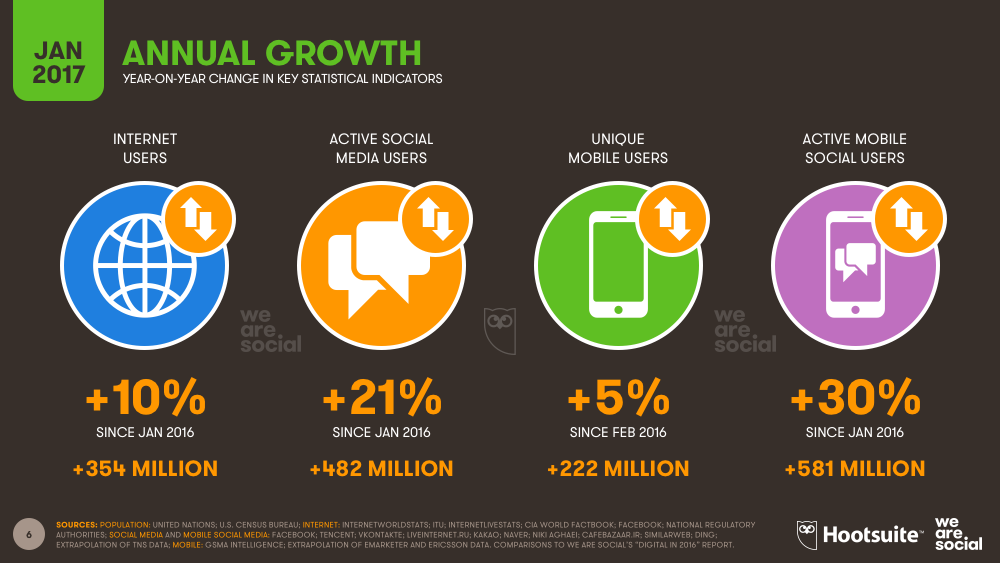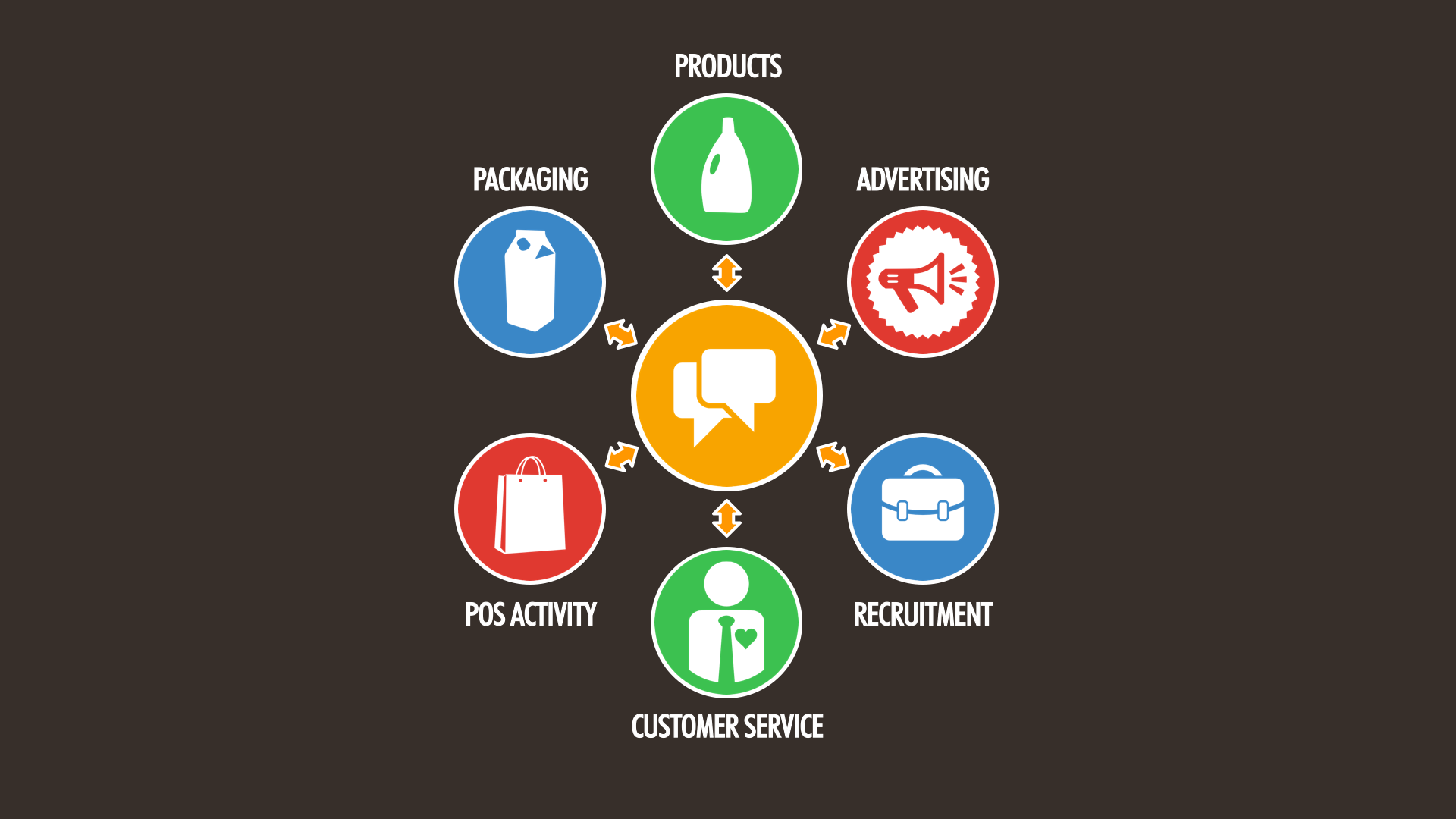INSPIRING MARKETING EPISODE 001: THE RISE OF MESSENGERS
Mobile messengers are a relatively recent addition to the marketing toolkit, but in the space of just a few years, they've already completely changed the rules of social media marketing.
In this first episode of our Inspiring Marketing video series, we look at how this dramatic rise in messengers' popularity will impact brands, and offer advice and guidance for marketers who'd like to make the most strategic use of these powerful communications platforms.
Episode 1 Content
There are three distinct elements to the content for this episode:
- The full video, which you can watch in the YouTube embed above (click here if you'd prefer to watch it on YouTube);
- The supporting presentation deck, which you can read in full in the SlideShare embed below (click here if you'd prefer to read it on SlideShare); and
- The video transcript - together with our advice for marketers - which you can read below, after the SlideShare embed.
If you have any questions on the content I cover in this episode, feel free to get in touch on social media – you'll find me on LinkedIn by clicking here, or on Twitter as @eskimon – or you can share your questions in the comments section at the bottom of this post.
The Rise Of Messengers
In Episode 1 of Inspiring Marketing, we explore the rise of mobile messengers, and how these platforms are completely re-writing the rules of social media marketing.
The topic of today’s episode was inspired by the Digital in 2017 report that I just published together with We Are Social and Hootsuite, but it’s a topic that’s come up again and again in the reports in this ongoing series.
This is the latest snapshot for digital, social and mobile use around the world. Obviously there’s a whole load of very impressive numbers in here – particularly that finding that more than half of the world’s population now uses the internet – but there’s one number from this report I really want to draw your attention to, and it’s this one in the bottom right-hand corner of the next slide:
As you can see, the use of mobile social media has leapt by 30% over the past 12 months. That number is pretty impressive in its own right, but it’s the evolution in behaviours that go with that growth that are particularly interesting to marketers.
When we look at the world’s most active social media platforms, it’s easy to spot a clear trend:
Much as they're quite impressive again, it’s not so much the numbers on this chart that we want to be looking at, but the colours. The red bars indicate a mobile messenger platform – or chat app if your prefer – and as you can see, four of the world’s six most popular social media platforms are now messengers.
What’s more, these platforms are growing faster than the more 'traditional' social networks like Facebook and Twitter
If you’d like to dig into that data in more detail, you’ll be pleased to hear that it’s all available for free – you can access all of these reports simply by clicking here.
But what does all this data actually tell us?
Well, the first thing is that mobile messengers are already a very big deal. In fact, a recent report from Juniper Research suggests that – globally – more messages will be sent via messenger platforms this year than will be sent by email.
What’s more, when we start looking at things like frequency of use and depth of engagement, it’s likely that mobile messengers have already overtaken ‘conventional’ social networks to become the world’s most common form of online interaction.
These findings reveal a huge shift in people’s behaviour, and it’s all happened in a relatively short space of time too. So why have chat apps become so popular, and why are they growing so quickly?
That’s a question that I’ve been asking people all over the world over the past few months, and there are some common themes that have come up again and again in those conversations.
The first common theme is that the interactions and conversations we have on messengers are usually more natural than the conversations we’d have in the public comments section of a platform like Facebook or Instagram. Messenger platforms are designed for fluid conversation, and that’s still how most of us would prefer to engage with our friends, our families, and our colleagues.
Another theme my conversations have highlighted is the fact that there are still no annoying adverts in messengers (at least for now). That may change at any time of course, but many people have been telling me that they prefer the clean, focused environments of platforms like WhatsApp and WeChat, compared to the ad-heavy experiences that have come to characterise larger social networks.
People in developing markets also cite the fact that messengers are cheaper to use. That might sound a bit counter-intuitive at first, because most social platforms are still free to use. However, it’s not the platforms themselves that have people worried; rather, it’s the cost of the mobile data that goes with them. Social networks often feature a lot of heavy content like video, and this quickly contributes to a hefty data bill for people accessing on pay-as-you-go mobile contracts.
That’s particularly important in developing economies, where it’s normal for almost all mobile connections to be pre-paid.
But the last of the themes that have been coming through in my conversations is perhaps the most interesting: the fact that mobile messengers are less stressful than public social networks. This is a theme we’ve heard a lot about in recent months, whether it’s Instagram influencers like Essena O’Neill talking about taking hundreds of photos of the same pose, just to find one that she’s happy with, or whether it’s charities talking about the impact of social media on young people’s self-esteem. These issues are far less common in messengers though, because most conversations in these platforms are private, and take place between people who know already each other.
This rapid shift to messengers has some serious implications for marketers though – especially because messengers are changing the fundamental rules of social media marketing.
The first key change is that messenger conversations are private, which means marketers can’t use social media listening tools to monitor and understand people’s behaviours and motivations. It’s also close to impossible for brands to join people’s conversations about products, brands, or industries unless those people actively invite us to join them, and that’s something I’m guessing isn’t going to happen very often.
This is a huge loss for marketers though, because social media listening had the potential to help us dramatically improve our ability to identify, understand, and deliver the things that our audiences actually want. Sadly, though, we seem to have squandered most of that opportunity by focusing our social media listening activities on measuring campaign performance; in other words, we’ve spent far too much time listening to conversations about ourselves, instead of identifying and listening to conversation that help us understand the broader needs, interests, and motivations of our audiences.
The good news is that there’s still a small window of opportunity left to go out and listen to the meaningful conversations that people are having about our brands in public social media like Twitter, so my advice would be to take advantage of that while you still can.
The second big challenge for marketers hoping to use messengers is that there’s no way to advertise in most of the top platforms – at least not for the moment. That’s likely to change quite soon – we’re already hearing plenty of talk from Mark Zuckerberg and co about Facebook’s intentions to monetise both WhatsApp and Facebook Messenger – but given the recent updates to WhatsApp’s terms and conditions, where the company specifically stated that they don’t want users to have a “spammy experience”, my guess is that the commercial teams behind these platforms are also looking for alternatives to interruptive advertising.
The third important change to social media’s rules relates to measurement. The fact is, 'likes', followers, views, and so on simply don’t matter as much in messengers. What does matter, though, is inspiring meaningful conversations about our brands, and ideally encouraging favourable word-of-mouth endorsements between people who actually trust each other’s opinions.
What’s become clear to me over the course of all these conversations is that the ‘boosted content’ approach that most marketers have come to depend on in social media simply won’t work in a messenger-centric world.
Brands can no longer get away with creating mediocre content, putting a load of ad investment behind it, and somehow expect to hit any kind of meaningful KPIs.
So, if we can’t buy our way into people’s social feeds, there’s only one option left: we need to earn people’s attention instead. Of course, the key question then becomes ‘how?’, but the answer is actually quite simple: we need to add meaningful value to our audience’s lives.
Marketers need to look at how they can use every element of their marketing mix to offer something meaningful to their audiences, and how they can use all of those elements to inspire valuable, organic conversations.
If we get this right, we don’t need to wait until we’ve sold our products or services before we can add value to people’s lives; instead, we can look for ways to add value proactively at every opportunity, and through every interaction.
For example, that might mean designing packaging that inspires people to share a picture of it in their messenger chats, or hosting an event that people choose to attend and talk about with their friends. It could also involve providing amazing customer service experiences that people can’t resist discussing with other people, or even using more engaging approaches to recruitment to inspire conversation and storytelling amongst the general public, and not just potential recruits.
Marketing’s key task today – and its biggest opportunity – is to create brands that are truly worth talking about.
As part of that, we need to start thinking of social media engagement as the outcome of great marketing, and stop treating it as just another vanity metric that we buy from media owners. Real engagement is what happens when people care about what a brand or organisation has done, and choose to talk about it with others.
That leads us to the key tip for this episode: don’t just think of social media success in terms of creating and delivering content; instead, try to think of it in terms of inspiring meaningful and valuable conversations about your brand at every opportunity.







